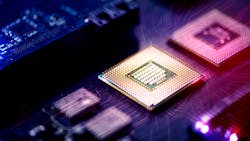Purdue Prepares for Growing Demands in Microelectronics
Semiconductors and microelectronic devices are being incorporated into many major application areas, from automobiles to telecommunications networks. One concern with growing demand is too many users and not enough workers.
Fortunately, Purdue University and its College of Engineering have extensive experience working with government organizations and other universities and offer educational programs designed to prepare students for careers in microelectronics and semiconductors (see the figure), from design and simulation to fabrication and test. Some of the course content has been summarized inn a recent roundup available from the university, “Semiconductors and Microelectronics.”
Purdue has been selected by the National Institute of Science and Technology (NIST) to define future needs for semiconductors and their packaging. Other circuit design goals target high circuit density, miniaturization, and security. The roundup lists the many other universities that team with Purdue to provide the comprehensive postgraduate education in microelectronics and semiconductors expected to be needed for the next generation of electronics engineers.
As examples, the roundup presents locales at which courses of study can be pursued, including in radiation hardening, heterogeneous integration, advanced packaging, and system-on-chip (SoC) technology. Students learn strategies for adopting each technology to modern needs, such as reduced size, weight, and power (SWaP), miniaturization, and the capability to deliver maximum performance levels even in hostile environmental conditions.
About the Author
Jack Browne
Technical Contributor
Jack Browne, Technical Contributor, has worked in technical publishing for over 30 years. He managed the content and production of three technical journals while at the American Institute of Physics, including Medical Physics and the Journal of Vacuum Science & Technology. He has been a Publisher and Editor for Penton Media, started the firm’s Wireless Symposium & Exhibition trade show in 1993, and currently serves as Technical Contributor for that company's Microwaves & RF magazine. Browne, who holds a BS in Mathematics from City College of New York and BA degrees in English and Philosophy from Fordham University, is a member of the IEEE.
